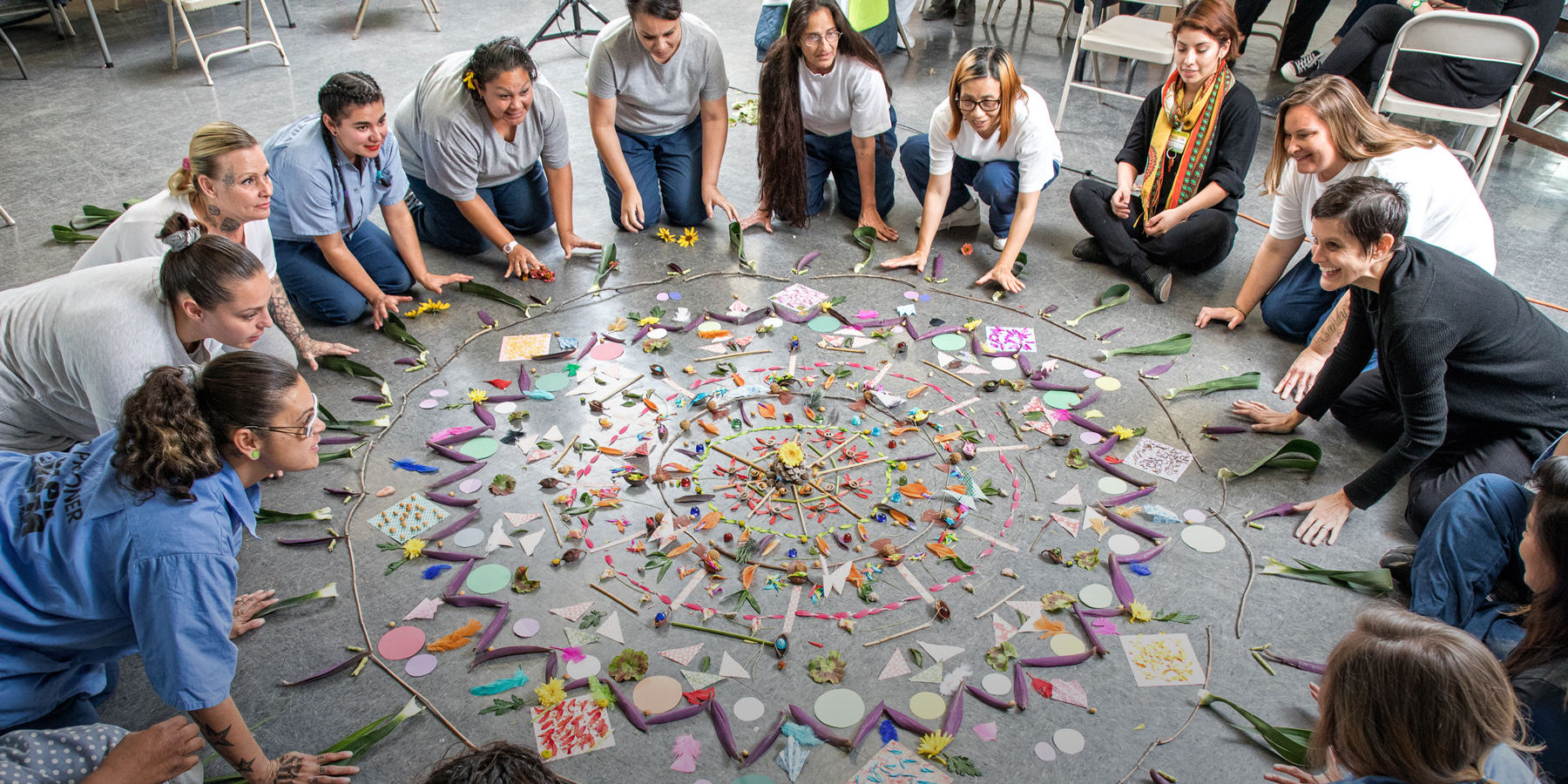
The Healing Power of the Arts
Prison Arts Collective seeks to transform the lives of incarcerated individuals through the arts.

Buckley—who has focused much of her teaching career on the intersection of art and social justice—launched PAC in 2013 while a visual studies professor at
California State University, San Bernardino to expand community access to the arts at a time when arts funding was being slashed. The program proved most successful in the prisons she had partnered with, leading her to primarily focus on arts education for incarcerated individuals.
She took PAC with her when she moved to SDSU, where the program is now headquartered, and proceeded to expand to more campuses and prisons. Currently, there are active chapters at San Diego State, Cal State San Bernardino,
California State University, Fullerton and
California State Polytechnic University, Humboldt working in 13 prisons across the state.

“I've seen how often the arts and the idea of creativity is cut out from communities that have many strengths, but also suffer from higher levels of poverty, struggles with systemic racism and more income inequality,” Buckley says. “Our program is based on the idea of art as a human right, and it's dedicated to expanding access to the arts more broadly, but specifically to people experiencing incarceration. We brought art to other community sites, but the prison is where it seemed to be most needed, where my students wanted to grow the work and what was calling for my attention the most.”
The program features arts courses, from creative writing to music to painting, led inside the prisons by CSU faculty, students, volunteers and peer facilitators. They seek to blend their expertise and life experiences to develop workshops that resonate with participants.
In addition, PAC offers an arts facilitator training, which teaches incarcerated individuals—like those who participated in the panel—to lead the workshops and requires them to develop their own curriculum. For example, another panelist developed a creative writing curriculum that asks incarcerated students to write about a time they hurt someone from the victim’s perspective. This curriculum is now being implemented in several partner prisons.

“I have seen for the past nine years how incredibly powerful the arts can be for people who are incarcerated,” Buckley says. “In general, the arts can provide a sense of healing, a sense of identity and a sense of power and freedom. But I've never seen art to be quite so powerful as inside the prisons. I think it's because the participants are in a context where they have so little access to freedom of choice.”
During COVID-19, however, the workshops switched to a distance learning format, with facilitators and participants communicating via mail correspondence. PAC created lesson packets and
Outside:Inside Productions, which includes instructional videos and a podcast, that could be used while facilitators were barred from entering the prisons. PAC is currently working to re-launch the in-person workshops.
The program also continues to expand in other ways through new partnerships, public events and symposiums and research to bring arts education and spaces to all people affected by the justice system. Recently, it has gained global reach with volunteers in other countries like the United Kingdom, Ireland and Australia implementing partner programs in their own communities.
“We are dedicated to maintaining our community-based model and working with other campuses and participants to create local chapters that support additional correctional institutions so we can grow intentionally and maintain our focus,” Buckley says. “PAC is also grateful to have volunteers and partners reach out from across the nation and the world to learn from what we do and to join the team as collaborators and partners.”
PAC is supported by Arts in Corrections, an initiative from the California Arts Council and the California Department of Corrections and Rehabilitation (CDCR), as well as CDCR Innovative Programming grants. It has also received Art Projects grants from the National Endowment for the Arts.
But it is the students giving their time to the program who most make PAC’s work possible, says Buckley. Students in the CSU system are “particularly dedicated, mature and motivated to give back to their communities. Often this is motivated by their own life experiences, ranging from working full-time while earning a degree or being first generation college students to having family members who are incarcerated or otherwise system-impacted. This makes them especially equipped for the unique project of facilitating programming in local prisons.”
Meet a few individuals who give of themselves to bring the transformative power of the Prison Arts Collective to their communities.
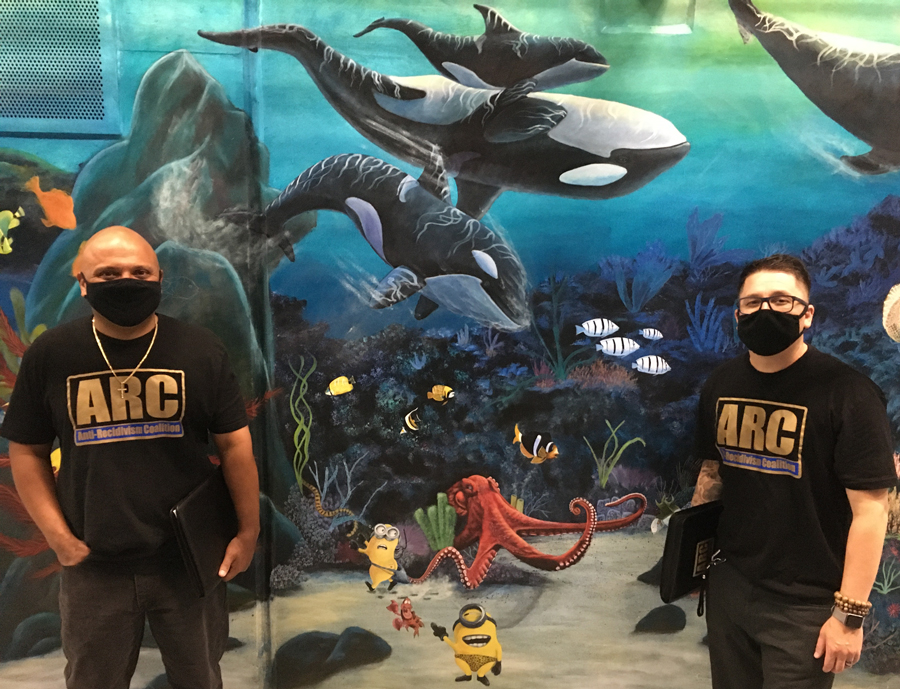
Mark Taylor
Cal Poly Humboldt | PAC alumnus and class facilitator, social work bachelor’s student
After serving 21 years incarcerated in the California Department of Corrections and Rehabilitation, Mark Taylor (pictured on the left) enrolled in the PAC program that played a role in redirecting his life’s course. He later completed the facilitator training course while still incarcerated and became a volunteer upon release, accepting an award for PAC on the California Senate floor and heading up an art exhibition.
“The Prison Arts Collective played a significant role in my successful reintegration into society,” Taylor says. “A healthy support network is a critical component of successful reentry. An expansion of this program will enhance public safety by reducing recidivism.”
Now earning his bachelor’s in social work at Cal Poly Humboldt, he has spearheaded PAC’s expansion to the campus and facilitates classes at Pelican Bay State Prison.
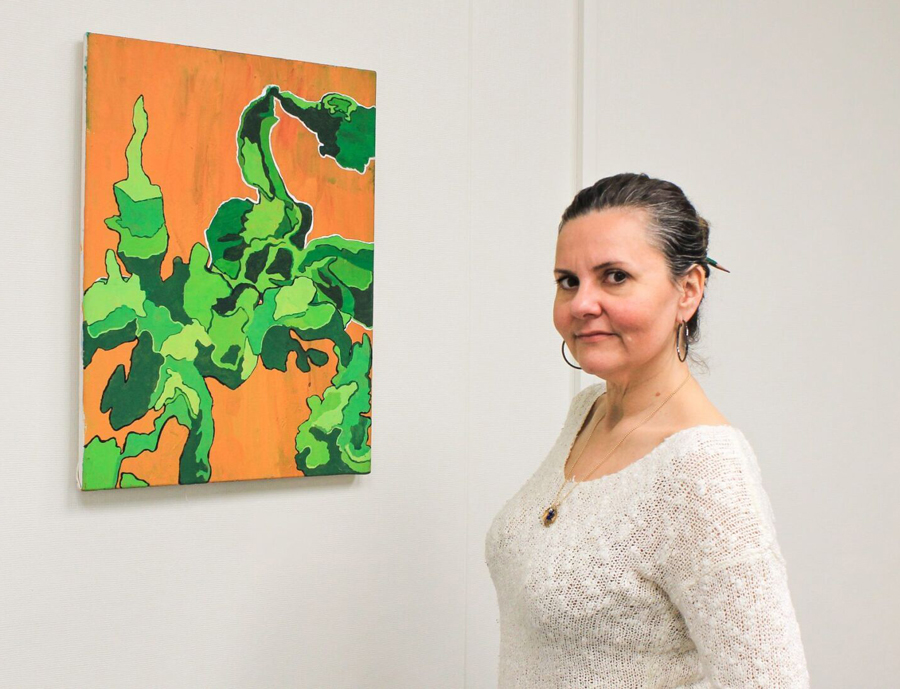
Mary Anna Pomonis
Cal State Fullerton | PAC CSUF chapter director, assistant professor of art education
Since joining the faculty at Cal State Fullerton and launching the campus’s PAC chapter in 2019, Mary Anna Pomonis has incorporated the program into the service-learning course she teaches, Art and Social Justice. Students in the class volunteer as teaching interns, bringing arts education to the California Institution for Women.
“The focus on social justice, meditation, non-violent conflict resolution, deep visual exploration and establishing a safe space and a space of empathy all are elements of teaching and learning that are vital to art students in this historic time,” Pomonis says. “CSUF students are dealing with death and isolation, and the participants inside are dealing with similar issues. When the two groups meet, the shared recognition is healing and cathartic for everyone involved.”
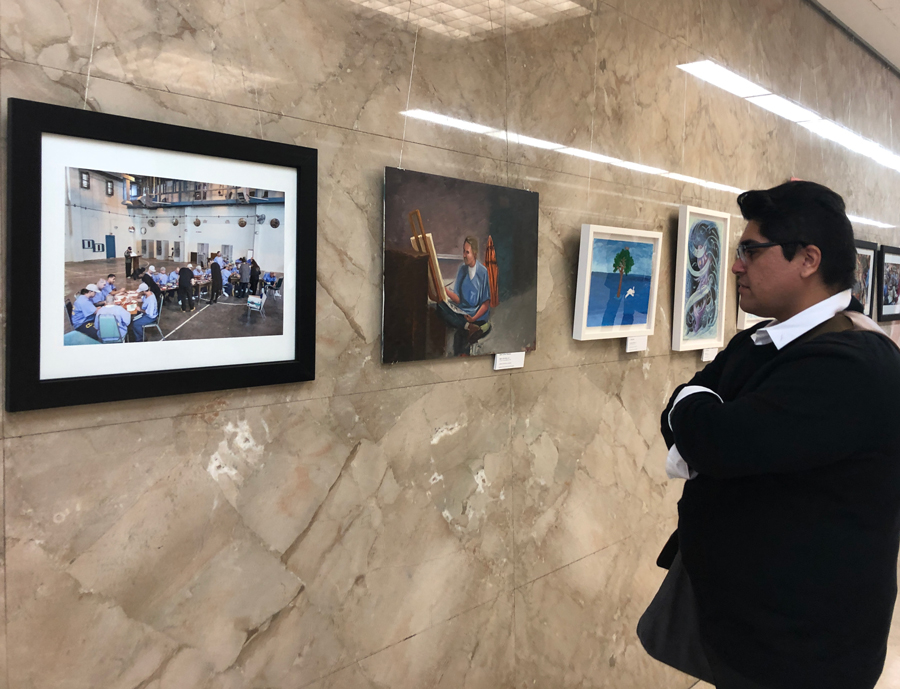
Alexander Masushige
Cal State San Bernardino | PAC Advisory Board member, former PAC teaching artist and student intern, CSUSB alumnus
As a CSUSB student intern, a teaching artist at the California Institution for Men, a program coordinator for the facilitator training course and now a PAC Advisory Board member, Alexander Masushige has embraced many opportunities to support PAC’s mission over the years.
“Getting involved with PAC was a way to support individuals who were in similar situations as my family members struggling with recidivism by using my skill set as an artist and educator,” he says. “My experience with PAC showed me how important and healing art can be to those who just need a space to breathe, reflect and have a moment of creativity without the limitations of something being right or wrong.”
In his current role, Masushige supports programming, curriculum development and chapter expansion, all while also working as a high school art and animation teacher.
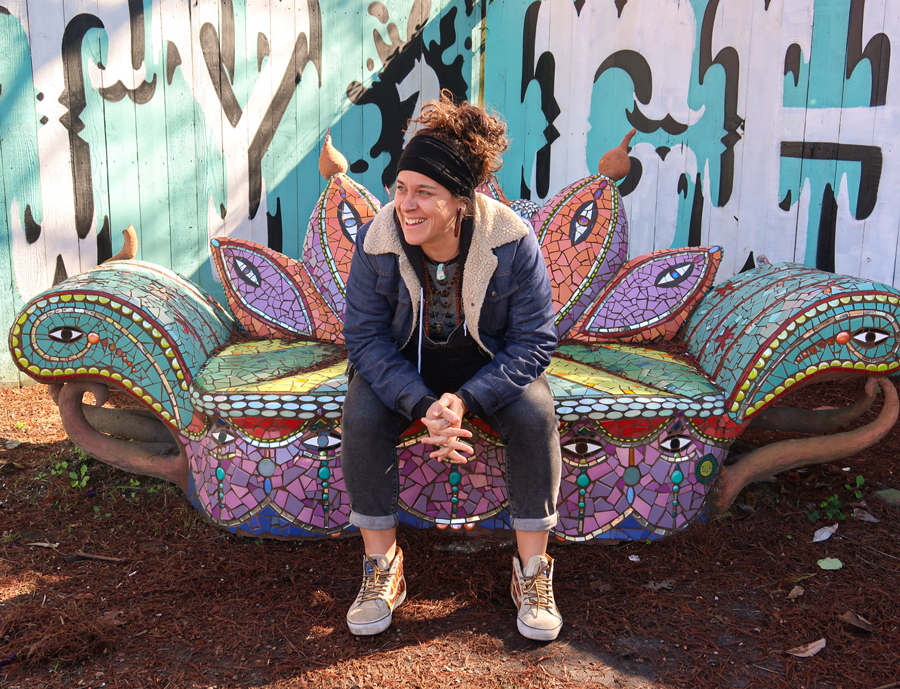
Jamie Pelusi
San Diego State | PAC Program/Research Assistant, master’s in studio arts student
“I am interested in the ways art can be used as a tool for healing and liberation,” Jamie Pelusi says. “I am interested in the ways artists can leverage their resources and privilege to create access points for other members in their communities.”
Currently working towards her master’s in studio arts at SDSU, Pelusi joined PAC’s team to support research projects and coordinate the distance learning packets used during the pandemic. In addition, she is co-teaching an Art and Restorative Justice course with Buckley.
“Our society has a practice of incarcerating and separating some of our community members in a way that discourages those of us on the outside from creating or maintaining connections,” she says. “I believe this is destructive to all of us. PAC’s work helps to reestablish some of those connections through the arts.”